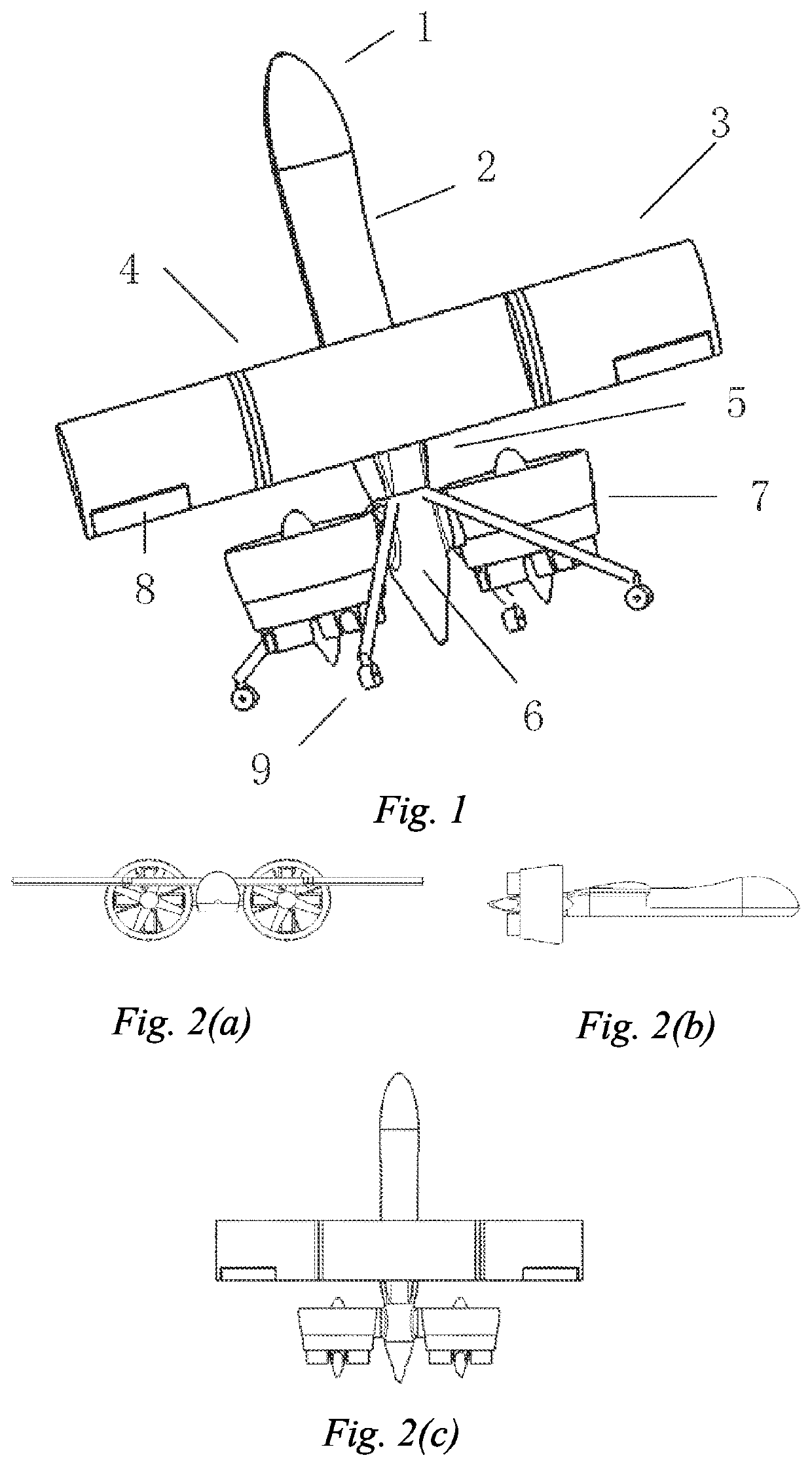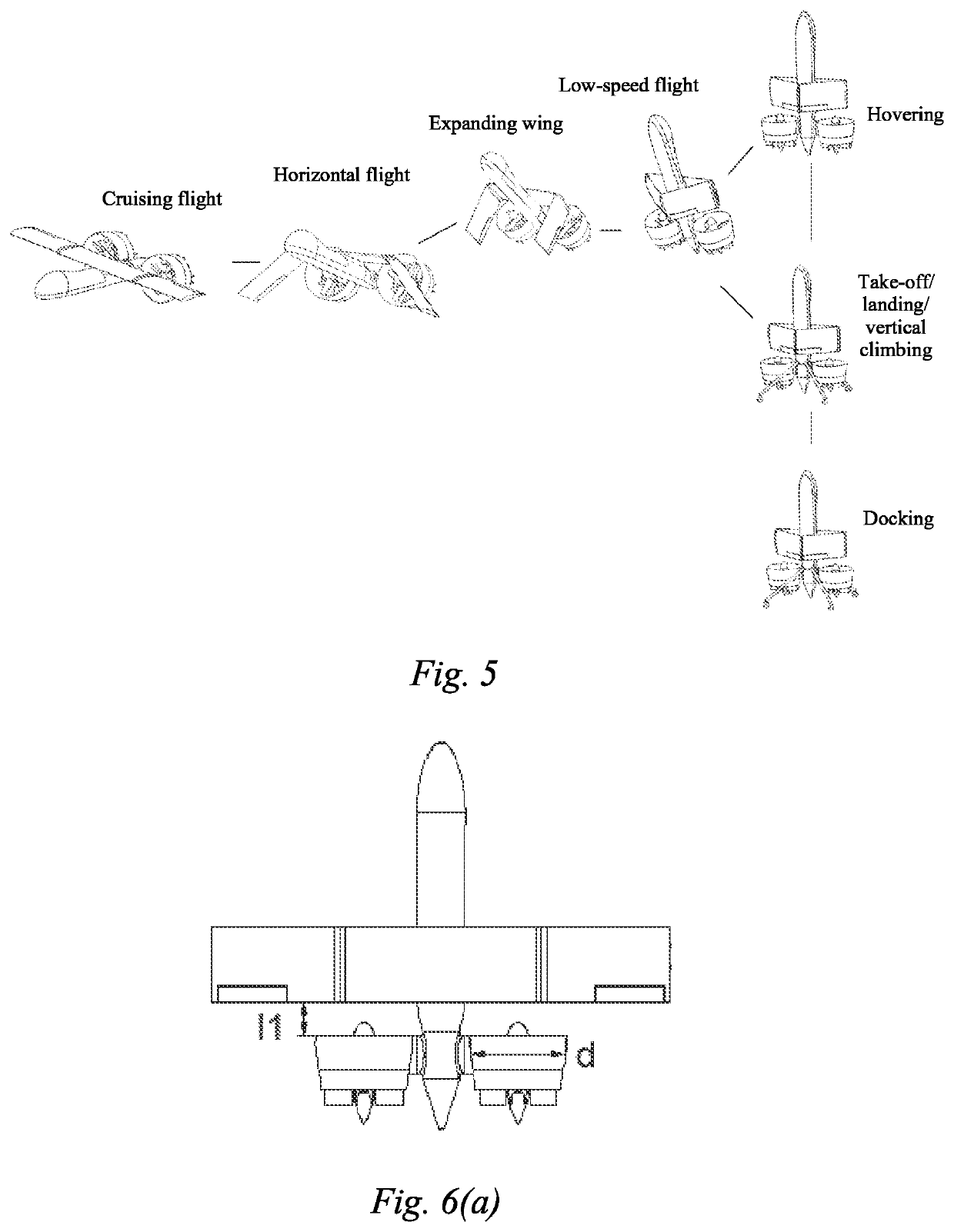Vertical Take-Off and Landing Unmanned Aerial Vehicle Having Foldable Fixed Wing and Based on Twin-Ducted Fan Power System
a technology of fixed wing and power system, which is applied in the field of vertical take-off and landing unmanned aerial vehicles with foldable fixed wing and based on twin-ducted fan power system, can solve the problems of difficult to achieve stable aerodynamic effects of tilting airfoils, large number of accidents and even frequent crashes in the practical process, and low utilization of rotating mechanism, so as to improve the aerodynamic performance of the fan, reduce the power loss of the fan blade tip, and improve the lift-to-
- Summary
- Abstract
- Description
- Claims
- Application Information
AI Technical Summary
Benefits of technology
Problems solved by technology
Method used
Image
Examples
embodiments
[0045]A three-dimensional schematic view of various main components of an aerial vehicle of this embodiment is as shown in FIG. 1, the aerial vehicle comprising: a fuselage, a foldable wing 3, ducted fan power systems 7 and a retractable landing gear 9, the fuselage being divided into a nose 1, a front fuselage 2, a middle fuselage 5 and a rear fuselage 6, wherein the ducted fan power systems 7 are symmetrically distributed on both sides of the rear fuselage 6 in a transverse arrangement, the foldable wing 3 is arranged at the front of the middle fuselage 5 in an upper single-wing arrangement, the retractable landing gear 9 is arranged at the front of the rear fuselage 6, the aerial vehicle is in a tailless arrangement, the center of gravity of the aerial vehicle is located at the rear of the front fuselage 2, and ducts and the wing are combined in an optimized manner by means of a specific position relationship therebetween.
[0046]In this embodiment, an aerodynamic arrangement emplo...
PUM
 Login to View More
Login to View More Abstract
Description
Claims
Application Information
 Login to View More
Login to View More - R&D
- Intellectual Property
- Life Sciences
- Materials
- Tech Scout
- Unparalleled Data Quality
- Higher Quality Content
- 60% Fewer Hallucinations
Browse by: Latest US Patents, China's latest patents, Technical Efficacy Thesaurus, Application Domain, Technology Topic, Popular Technical Reports.
© 2025 PatSnap. All rights reserved.Legal|Privacy policy|Modern Slavery Act Transparency Statement|Sitemap|About US| Contact US: help@patsnap.com



